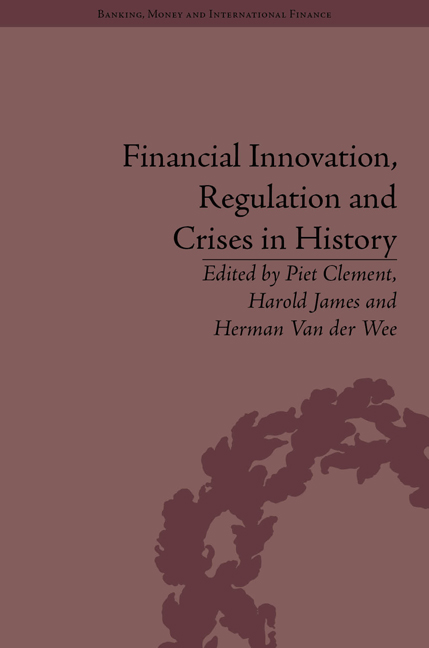Book contents
- Frontmatter
- CONTENTS
- Acknowledgements
- List of Contributors
- List of Figures and Tables
- Note on the Text
- Part I Introduction
- Foreword: Financial Crises – Will it be Different Next Time?
- 1 Financial Innovation, Regulation and Crises: A Historical View
- Part II Episodes of Financial Innovation, Regulation and Crisis in History
- Part III Innovation, Regulation and the Current Financial Crisis
- Notes
- Index
1 - Financial Innovation, Regulation and Crises: A Historical View
from Part I - Introduction
- Frontmatter
- CONTENTS
- Acknowledgements
- List of Contributors
- List of Figures and Tables
- Note on the Text
- Part I Introduction
- Foreword: Financial Crises – Will it be Different Next Time?
- 1 Financial Innovation, Regulation and Crises: A Historical View
- Part II Episodes of Financial Innovation, Regulation and Crisis in History
- Part III Innovation, Regulation and the Current Financial Crisis
- Notes
- Index
Summary
In public opinion, as in much of the academic literature, the financial crisis that started in 2007–8 has been blamed on financial innovations gone awry. In a nutshell, the by-now conventional account runs like this: spurred on by a cheapmoney environment, the financial boom in the years prior to the crisis generated an over-issue of new and complex financial products, such as credit default swaps (CDS), off-balance-sheet derivatives and, infamously, subprime mortgages packaged in mortgage-backed securities and collateralized debt obligations (CDO). The main problem of this type of financial innovation has been that the underlying risks of these novel products were often incorrectly priced or not transparent to the ultimate creditor. This fundamental misalignment infected the global financial system on an unprecedented scale, and eventually proved lethal once the boom ended and vulnerabilities became apparent. The generalized loss of confidence and the collective run for safety (de-leveraging in the jargon; i.e. financial institutions' attempt to get rid of high-risk, toxic assets and to improve capital/asset ratios) have sparked a global financial crisis, which in terms of its severity and longevity has been the worst since the Great Depression.
It is no surprise that the current crisis has led to renewed interest in the work of the American economist Hyman Minsky (1919–96). Minsky argued that booms associated with financial innovation can easily lead to speculative euphoria, increased financial fragility and eventual collapse (the financial instability hypothesis).
- Type
- Chapter
- Information
- Publisher: Pickering & ChattoFirst published in: 2014

